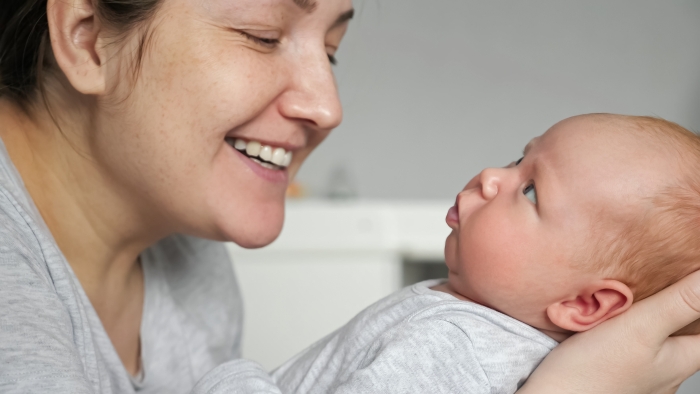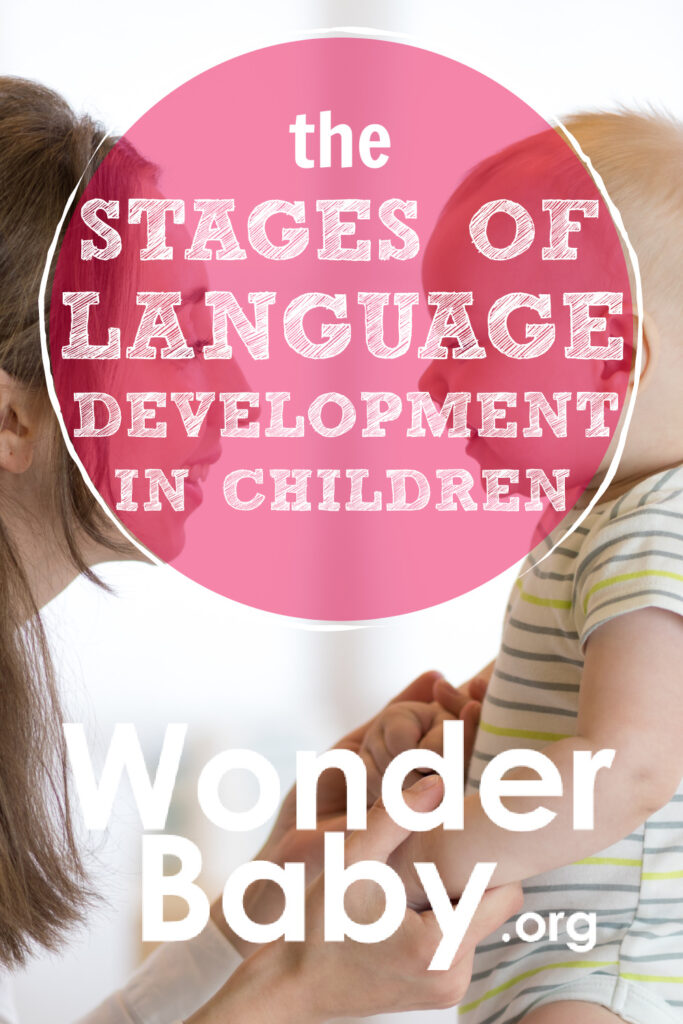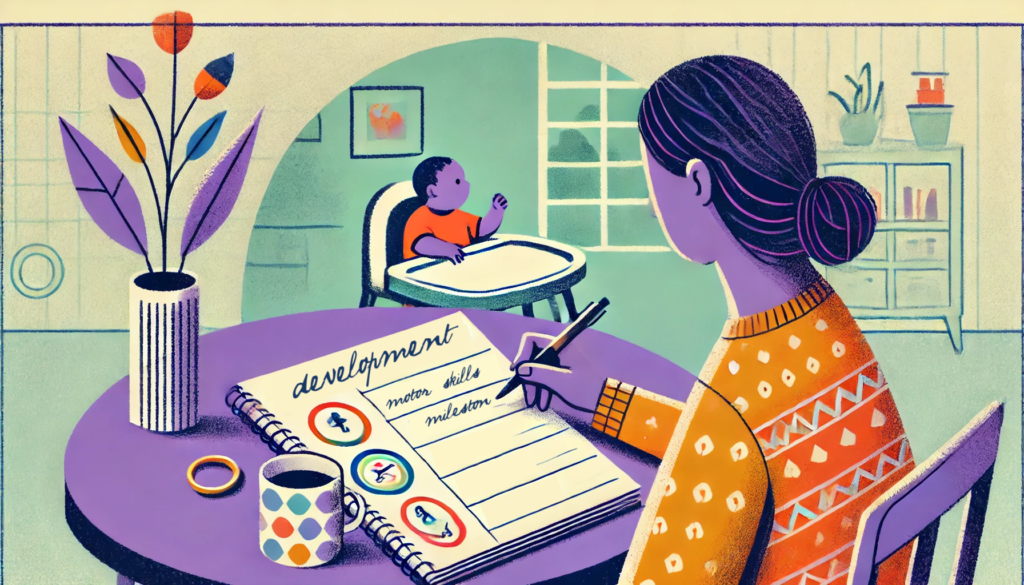The 5 Stages of Language Development in Children

- Children go through several stages of language development as they grow, moving from simple sound play to combining words.
- The first three years of life are the most critical time for language development.
- There are 5 main components in language acquisition that shape language from single-word use to complex sentences.
- Children who have difficulty learning language due to hearing impairment, developmental disorders, or limited exposure to language or experiences may have difficulty later on with social and academic skills.
I remember holding my newborn in the delivery room. She was only about 5 hours old, and the room was quiet and calm. I love music and had a playlist ready for just this moment. When the music started, this brand new little person reacted by shifting her body and then stilling—she was listening to the music! It was subtle body language but proof that her brain was already taking in the auditory information around her.
Babies start developing the foundation for language as they listen to the sounds of the world around them. This is why it is so important to have infants’ hearing checked at birth and that, as caregivers, we provide language modeling by talking to them throughout the day, even before they can speak.
Understanding Language Development in Children
Language is a complex system that takes years to master. Language acquisition begins at birth as babies absorb the speech sounds of the language around them, and by age two they start putting two words together to communicate.
Children must be able to hear in order to learn language. While most newborns have a hearing screening, there are a number of children who will develop hearing loss before preschool. Even mild hearing loss can greatly impact a child’s development.
Allen D. Buz Harlor, Jr. MD and Charles Bowser, MD, note in their article Hearing Assessment in Infants and Children that “failure to detect congenital or acquired hearing loss in children may result in lifelong deficits in speech and language acquisition, poor academic performance, personal-social maladjustments, and emotional difficulties.” If you have any concerns about your child’s hearing, take them to see an audiologist.
As children begin speaking, they will meet various speech-language milestones that let you know if they are on the right track. Your pediatrician will ask about these milestones during checkups, and you can also follow along with the checklists as your baby grows. If you have any concerns regarding your child’s speech and language acquisition, please see a speech-language pathologist.
There are five main components of language that your child will incorporate as they move through their speech-language development.
- Syntax: word order
- Morphology: the smallest level of meaning in language at the word level. Examples of grammatical morphemes are the plural “s” or past tense “ed.”
- Phonology: speech sound patterns
- Semantics: word meaning
- Pragmatics: the social use of language
A child may have difficulty with one or more of these areas of language as they grow. Most often, speech-language therapy can help address these difficulties if they arise.

How Important Is Language Development in Early Childhood?
Language is the key to who we are and how we interact with our world. It is understanding others and being able to express our wants, needs, and feelings. It helps us make meaningful connections with others throughout our lives. This is why the first three years are critical in building the foundation of language.
This language learning is the foundation for later developing skills such as reading and writing and other cognitive skills such as thinking and reasoning. Children with difficulty using spoken language or understanding language can become frustrated and act out as they try to communicate.
At What Age Does Language Development Begin?
Language learning starts at birth. From the moment a child comes into the world, they are exposed to the sounds of the world around them. As mom and dad talk to them, their brains learn the sounds of their native language. They progress from simply playing with their voice to using single words to eventually producing complex sentences. It is a complex process that develops over the first three years of life.
The first three years of a child’s life are the most critical for language development. The brain is primed and ready to absorb all the sounds in its environment. Children who miss out on this window of language learning may have difficulty catching up with their peers. This is why early intervention for speech and language delays is so important.
The 5 Stages of Language Development in Children
There are 5 main stages of language development. Each stage is important and necessary in its own way and builds upon the skills of the previous stage.
Pre-Linguistic Stage
The pre-linguistic stage is from birth to six months of age. During this time, the baby is focused on the sounds around them, both from words and in their environment. They begin to recognize their parent’s voices and learn the facial expressions of their caregivers.
During this stage, babies engage in simple vocal play or cooing to learn how to use their voice. They learn early communication: I cry, and something happens (I get fed or changed). I make sounds, and mom and dad respond back.
Babbling Stage
The babbling stage takes place from six to nine months of age. At this time, infants begin making different vowel and consonant sounds, combining them to form syllables that aren’t yet words. The babbling stage is a fun time for babies to explore how their voice works and experiment with volume. They may startle themselves if they say something really loud!
One-Word Stage
The one-word stage, or holophrastic stage, occurs between nine to 18 months. This exciting stage of language acquisition is when parents will finally hear their baby’s first words. These single words are usually things in their environment, such as “mama” or “dada.”
Two-Word Stage
The two-word stage occurs between 18-24 months. You may hear simple two-word sentences such as “mommy hat” or “puppy go.” Children add more speech sounds to their words during this stage. However, these may contain some errors that are appropriate at this age. This is a rapid time of vocabulary development, and children may learn one to two new words per day.
Telegraphic Stage
The telegraphic stage develops between 24-30 months. It is called this as children combine several words to express an idea, but grammar is not prevalent yet, similar to a telegraphed message. For example, a child may say,“dada go work,” or “sissy home bus.” Children will continue to hone their speech sounds while still producing some sound errors in this stage.
Children will continue to build their language skills as they grow, developing more complex vocabulary and complex sentences. It is amazing to watch a child move from sound play to sharing their thoughts, feelings, and ideas!

Which Stage Is the Most Critical for Language Development?
The first three years are the most critical for language development. Each language stage is important as skills keep building on each other. The brain takes in all the auditory information and creates the foundation for further language learning.
If a child misses this window due to things such as low stimulation in the environment or difficulty hearing, it will be more difficult for them to learn language. For children with hearing loss, the use of sign language by caregivers is key to their language learning. If sign language is used early, babies will babble using gestures.
If it seems your child is struggling with an area of language learning, talk to your pediatrician. Your child may benefit from speech therapy to help them improve their speech sound development and language abilities. Early intervention is key to progress, so don’t wait if you have concerns.
Do Pacifiers Cause Speech and Language Problems?
While pacifiers are wonderful for helping infants calm, many children stay attached to them into toddlerhood and early childhood. However, long-term use can impact speech-language development as well as the structure of the teeth and mouth.
The American Dental Association (ADA) recommends children should stop using the pacifier by age 2. If a pacifier is used too much or for too long, it can lead to a reverse swallow and a tongue thrust (in which the tongue protrudes past the front teeth), which will affect the growth of the jaw and palate. This may lead to a significant and difficult-to-remedy articulation disorder (producing speech sounds incorrectly). Future dental work may be needed to help correct this.
In addition, kids can’t talk when the pacifier is in their mouth! This can lead to children not talking as much, therefore not getting much practice using new sounds, words, and word combinations, leading to delays in speech development and language abilities.
While there are recommendations for the best time for pacifier weaning, every child is different. The child, family dynamic, and overall development should be considered when deciding to wean from the pacifier.

Related Posts

Development, Special Needs
How to Track Milestones for Developmentally Delayed Babies
Parents of developmentally delayed babies can explore practical tools and strategies to track milestones, celebrate progress, and support their child’s unique developmental journey.

Fine and Gross Motor
5 Alternatives to Tummy Time for Babies with Motor Development Challenges
Does your baby struggle with tummy time due to motor development challenges? These alternatives to tummy time will offer the same benefits.

Development
Should Twins Share a Room?
Wondering if your twins should share a room? We’ll explore the pros and cons of room-sharing for twins right here before you make your decision.